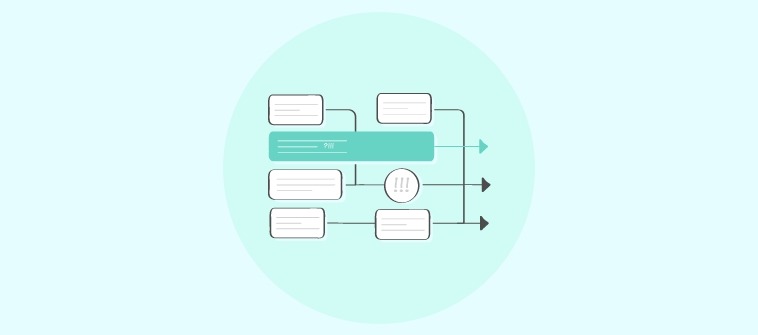“Great websites aren’t born—they’re built with a plan.”
I say that because I’ve lived it. Early on, I led a project that looked perfect, on the outside.
Behind the scenes? Missed deadlines, team confusion, and things going off track fast. That’s when I learned the value of website project management.
Fast forward to today—I don’t start a single web project without a battle-tested process.
Here’s why it matters:
- Teams need clarity on who’s doing what and when
- Without clear steps, projects quickly go off the rails
- The wrong methodology? It’ll cost you—time, money, and potential clients.
In this guide, I’ll share the key phases, methodologies, and pro tips that I’ve learned over the years. No fluff—just what actually helps you manage web projects better.
What Is Website Project Management?
Website project management is the process of planning, organizing, and overseeing the tasks, timelines, and teams involved in building a website. It ensures that every stage, from idea to launch, is executed efficiently, on budget, and aligned with business goals, without letting details fall through the cracks.
Here’s what effective project management of websites typically involves:
- Defining clear goals and outcomes for the website.
- Breaking the project into manageable tasks and phases.
- Assigning roles and streamlining team communication.
- Ensuring quality checks across design, content, and functionality.
- Scheduling timelines and tracking progress using project management software.
Let me show you how Cleveland State University uses project management software to stay on track and organize its projects.

Essential Phases in Managing a Website Project
Successful website project plans don’t happen by chance. They follow a clear, structured process, and each phase plays a crucial role in keeping things on track.
Here’s a simple breakdown of the key phases every website project should go through for smooth execution.
1. Initiation & Planning
This is where strategy takes shape. Before anything else, you need alignment, clarity, and structure.
Once your vision is set, it’s time to map the path forward.
- Set clear goals, timelines, and budgets that drive every task
- Choose your execution model—Agile, Waterfall, or hybrid
- Assign roles using roles & permissions to avoid overlap
- Use project templates to jumpstart planning without reinventing the wheel
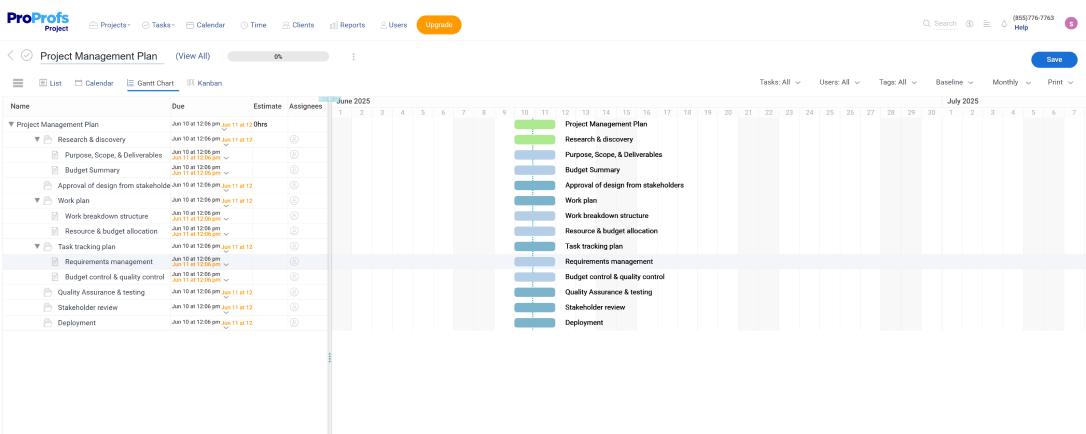
Pro Tip: Visualize project flow with Gantt Charts early—so your team sees the bigger picture, not just a task list.
2. Structure & Design
Now you move from ideas to tangible design. Wireframes, user journeys, and mockups bring the strategy to life.
Design is collaborative—this is where feedback matters most.
- Map user flows and build intuitive sitemaps
- Design UI/UX aligned with your brand and KPIs
- Collaborate in real time with task comments and @mentions
- Track stages visually using Kanban Boards
3. Development & Integration
Once the designs are approved, the code comes next. This is where your idea becomes a living, breathing product.
Efficient building depends on solid task coordination and time tracking.
- Set task dependencies to control the execution sequence
- Track dev hours via manual/auto time tracking
- Use unlimited storage for API docs, plugin lists, and sprint files
- Monitor progress with progress percentages at a glance
Pro Tip: Use estimated vs. actual hours tracking to improve time accuracy in future dev sprints and client pitches.
4. Content Population & QA
The framework is ready now; populate it with real, on-brand content and run quality checks.
Getting this right avoids embarrassing launch-day surprises.
- Upload SEO-optimized copy, visuals, and videos
- Use version history to manage revisions cleanly
- Schedule content milestones using the calendar view
- Assign reviewers as task followers to streamline QA
Pro Tip: Use recurring tasks to automate recurring QA checks (SEO audit, mobile view, speed test).
5. Launch & Delivery
With everything in place, it’s go-time. But launching isn’t just flipping the switch, it’s about finishing strong.
The key is communication and visibility.
- Run a final checklist and collect stakeholder approvals
- Provide guest access to clients for sign-off or real-time viewing
- Alert your team using in-app notifications and email alerts
- Use project progress reports to monitor what’s left
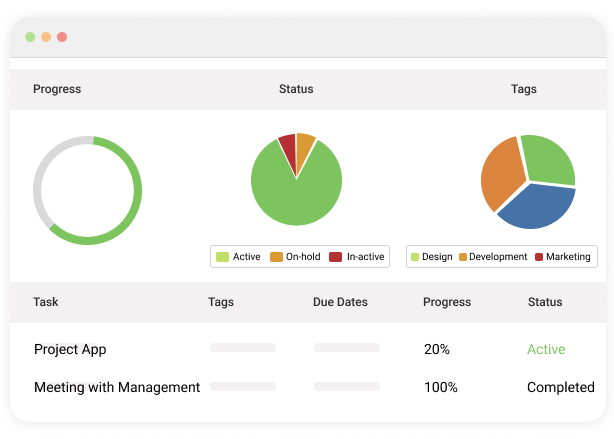
6. Maintenance & Optimization
Launch isn’t the end—it’s phase one of long-term growth. Keep improving, keep scaling.
Success now depends on tracking performance and adapting fast.

- Set up recurring tasks for regular updates and backups
- Log post-launch bugs via the bug tracking template
- Measure ROI with profitability reports and KPI dashboards
- Track team capacity using resource utilization reports
How to Track & Manage Website Projects Using a Project Management Tool
Managing a website project can quickly become overwhelming with so many moving parts—tasks, deadlines, team members, and client updates.
Let me show you how project management tools like ProProfs Project can help you organize everything in one place so you can stay on track and deliver website projects smoothly.
1. Launch Projects Quickly with Pre-Built Templates
Starting from scratch every time kills momentum. Templates help you skip setup and get straight to execution.
How ProProfs Project Helps:
ProProfs Project offers ready-to-use templates, such as Design Project Plans, Marketing Campaigns, or IT Roadmaps. Simply enter your details and launch your project in minutes.
2. Break Down Work into Tasks & Set Clear Dependencies
Lack of structure leads to confusion and delays. Breaking projects into tasks (and subtasks) brings clarity and flow.
How ProProfs Project Helps:

ProProfs Project lets you use task management, subtasks, and task dependencies to map out the full project workflow, ensuring nothing slips through the cracks and teams know exactly what’s next.
3. Visualize Project Timelines & Workflow Clearly
You can’t manage what you can’t see. Visual views reduce miscommunication and help teams move faster.
How ProProfs Project Helps:
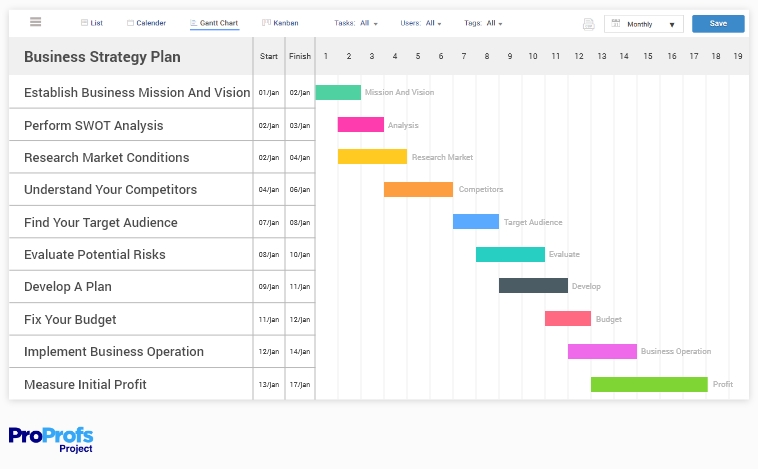
With Gantt charts in ProProfs Project, you can track timelines and dependencies at a glance. Also, Kanban boards let teams drag, drop, and update task statuses in real-time.
4. Centralize Communication to Eliminate Silos
When updates live in scattered emails and Slack threads, things get messy fast.
How ProProfs Project Helps:
ProProfs Project allows you to collaborate directly inside tasks using task comments, @mentions, and chat. You can also share files, track version history, and give clients guest access for streamlined visibility.
5. Track Time & Keep Billing Transparent
Time leaks and billing guesswork hurt profitability. Tracking hours ensures you stay in control.
How ProProfs Project Helps:
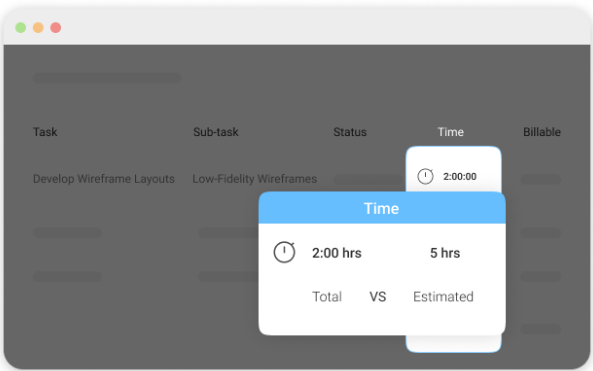
It offers built-in time tracking (manual or automatic), log hours, generate timesheets, and separate billable vs. non-billable hours to invoice clients accurately, without leaving the platform.
Five Proven Methodologies to Manage Website Projects Successfully
The success of your website project plan depends heavily on how you manage it. Here are five methodologies that can streamline your workflow and improve outcomes.
1. Waterfall

Source: Draegan Network YouTube
Waterfall is a linear, step-by-step approach ideal for projects with fixed scopes and clear deliverables. Each phase must be completed before the next begins, making it predictable but rigid.
This is great for static websites or clients who know exactly what they want from day one, with minimal changes expected mid-project.
2. Agile

Source: Rosemet
Agile thrives in fast-moving environments where feedback loops are essential. Projects are broken into small, manageable iterations, allowing teams to pivot quickly.
This is perfect for websites that evolve rapidly, such as product pages or SaaS sites, and for teams that collaborate closely with clients or stakeholders throughout the build.
3. Scrum
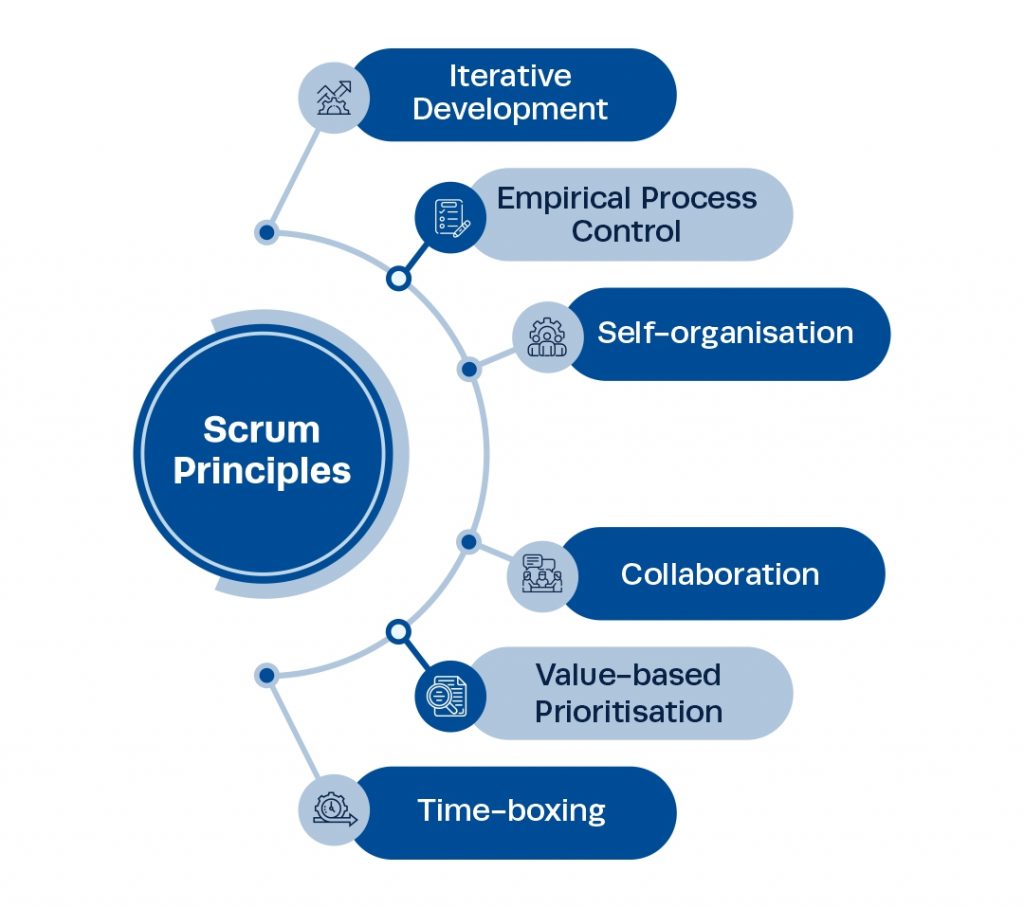
Source: Institute of Project Management
Scrum is a structured Agile framework that uses time-boxed sprints, daily standups, and clear team roles. It keeps everyone focused, aligned, and accountable.
This method is ideal for dev-heavy websites with ongoing feature updates or CMS work. It helps teams move faster, adapt quickly, and track progress with each sprint.
4. Kanban
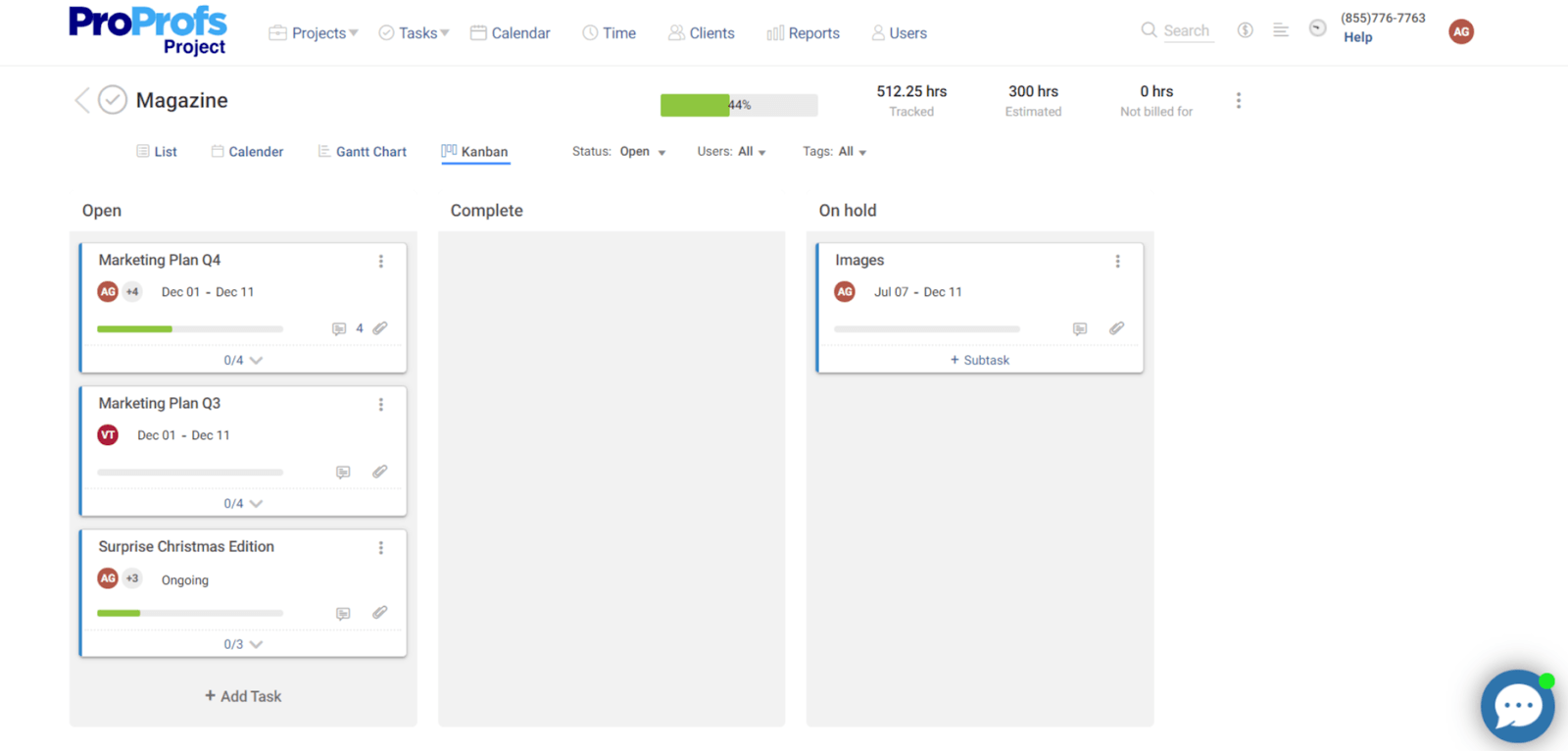
A visual-first, flow-based system where tasks move through stages on a board. It limits work-in-progress and boosts transparency across teams.
It works well for websites that are updated often. Whether it’s fixing bugs, adding new content, or tweaking designs, this approach keeps the team organized and tasks visible.
Watch this short video to learn how Kanban Board improves project visualization:
5. Hybrid (Agile + Waterfall)
The Hybrid model offers a strategic balance: Waterfall for roadmap clarity, Agile for execution flexibility. It’s especially effective for large-scale websites involving multiple teams or clients, giving you a framework to plan thoroughly and adapt dynamically.
Lead Website Projects With Confidence, Not Guesswork
A website project management plan involves navigating key phases, from planning to launch, using the right methodology and tools to keep everything on track. With clear processes and smart execution, you can deliver high-quality websites on time and within budget.
To make your projects smoother, always define the scope early, break work into smaller tasks, and communicate consistently with your team. Don’t wait for things to go wrong—plan ahead.
If you’re looking for a tool to manage it all in one place, ProProfs Project offers everything you need, from task tracking to collaboration and time management. It’s built to simplify success.
Frequently Asked Questions
How do I ensure my developers and designers stay aligned?
You can assign clear roles, create subtasks, and keep everyone on the same page with real-time updates and @mentions.
Is there a way to avoid repetitive manual follow-ups?
Yes, you can automate reminders, task status updates, and notifications so nothing falls through the cracks.
Can I track which team member is overloaded or underutilized?
Absolutely. You can use resource management and utilization reports to balance workloads.
FREE. All Features. FOREVER!
Try our Forever FREE account with all premium features!



